
JEWISH & CHRISTIAN HISTORY OF ISRAEL
Introduction
"If history matters then all history matters
& peace matters most !!"
Dirk-Pieter Mellema
The Jewish & Christian historical and archaeological ties to the land of Israel. Visualized with many artifacts & buildings that tell this fascinating story of all Abrahamic faiths in Israel before the year 1947. Israelhistory.info gives you a database of the most important archaeological artifacts & sites.

ANCIENT & UNIQUE

Not many countries can trace back their cultural and religious origins through archaeological records for more than 3200 years. Israel is a unique cradle of two world religions- Judaism and Christianity, both of which originate in Israel. For Jews, Israel is their indigenous homeland, and for all Christians, Israel is the holy land were Jesus was born, where he lived and shared his unique teachings. The most important biblical founders and prophets of both religions lived in Israel. Islam also claims to go back to the faith of the many prophets who lived in Israel although Islam originated in Mecca and Medina (Saudi Arabia today). This website also displays the history of Islam in Israel and perhaps this website could also have been called 'the Abrahamic history of Israel'. However its major focus is on the two world religions that could not have existed without Israel while including the fascinating Islamic history of Israel.
Amazing photo made by: Godot13
SUMMARY OF CHAPTERS
Go to chapters:
13th century - 745 BC
Archaeology has revealed that ancient Israelite culture evolved from the Semitic Canaanites. Eventually, two Israelite kingdoms, the Kingdom of Israel (Samaria) and the Kingdom of Judah, united. The Hebrew scriptures vividly describe the "United Monarchy" ruled by King Saul, David, and Solomon in the 11th century BC. However, the country later split into two separate kingdoms: Israel in the north (including Shechem and Samaria) and Judah in the south (with Jerusalem and the Jewish Temple).
Discover, click & read more!
745 -333 BC
The Neo-Assyrian Empire conquered the Kingdom of Israel in 720 BCE, while Judah became a client state of both the Neo-Assyrians and the Neo-Babylonians. Unfortunately, Jewish rebellions against the Babylonians resulted in the destruction of Judah in 586 BCE under King Nebuchadnezzar II. Later, Persian king Cyrus the Great allowed the exiled Jews to return to the Land of Israel. This marked the beginning of the formative period, in which a distinct Jewish identity developed, in the Persian province of Yehud. During this time, the Second Temple was constructed, replacing the destroyed Solomon's Temple and initiating the Second Temple period in the land of Israel.
333 - 37 BC
In 332 BCE, the Achaemenid Empire fell to Alexander the Great. Subsequently, Judea became part of the Ptolemaic Kingdom (c. 301–200 BCE) and later the Seleucid Empire (c. 200–167 BCE). The Maccabean Revolt, aimed at opposing Seleucid rule, resulted in the establishment of an independent Jewish kingdom under the Hasmonean dynasty (140–37 BCE). During the Second Temple period, significant developments took place, including the formation of the Hebrew Bible canon, the emergence of synagogues, and the shaping of Jewish eschatology.
37 BC- 390 AD
In 37 BCE, Herod the Great was appointed as the Roman-appointed king of Judea, and by 6 CE, Judea became a province of the Roman Empire. Jesus of Nazareth (c. 6 to 4 BC – AD 30 or 33) was born and crucified in Judea, were he played a fundamental role in the early growth of Christianity. Dissatisfaction with Roman rule and civil unrest led to the First Jewish–Roman War (66–73 CE), resulting in the destruction of Jerusalem and its Temple, as well as the renaming of the province into "Syria-Palaestina." The end of the Second Temple period is considered a significant turning point in Jewish history, with a profound impact on Judaism. Simultaneously, Christianity gradually separated from Judaism and transformed into a predominantly Gentile religion.
390 - 636 AD
After Emperor Constantine I embraced Christianity in the early 4th century, the Byzantine province entered a period of growth and prosperity. The emperor himself constructed a magnificent church at the Holy Sepulchre, the holiest Christian site. His mother, Saint Helena, built two additional churches, one at the Nativity site in Bethlehem and another at the Ascension site in Jerusalem. Jewish life experienced a revival in Galilee and Golan and many synagogues from that period are still visible in this region. Both Christian and Jewish pilgrimage continued and despite occasional religious conflicts, the region enjoyed peace and prosperity. This lasted until 611 when King Khosrow II of Persia launched an invasion, captured Jerusalem in 614 and destroyed some important churches. The Byzantine emperor Heraclius managed to regain control of the region in 628, but it was short-lived as Arab armies invaded within ten years.
636 -1291 AD
The Umayyad, Abbasid, and Fatimid empires imposed Muslim rule with limited rights and heavy taxation on non-Muslims, including Christians, Jews, and Samaritans, known as dhimmis. The Jews experienced a major revival when the school of the Masoretes during the Arab period (9th-11th century) standardised the precise text, pronunciation and musical notation of the Hebrew Bible (Tanakh). This work was vital for the preservation of the scriptural text for all Jewish communities worldwide. The Byzantine empire in Constantinopel and the other Christian kingdoms maintained a strong connection to the Holy Land, leading to increased pilgrimages to Jerusalem. However, pilgrims faced dangers from highwaymen and Seljuk attacks. These circumstances were the major reason for the 'Crusaders' conquest of the east Mediterranean region. The brutal war in 1099 came at the cost of many Muslim and Jewish lives. After this devastation, partial restoration occurred for both the Jewish and Muslim communities, as well as for pilgrimages.
1291 - 1517 AD
In the 13th century, the Mamluks gained power in Egypt and Syria. Despite this, Jewish immigration to the Holy Land continued, leading to the establishment of Jewish villages in Haifa, Caesarea, Tyre, and Acre. However, conflicts between Islam and Christianity resulted in the killing of many Jewish immigrants by the end of the century. During this Egyptian occupation, in the early 14th century, there was a revival of Jewish life and some Christian communities. Natural disasters like epidemics and earthquakes hampered further growth of Jewish and Christian villages. In the 15th century, a new wave of Jewish immigrants started arriving in Syria-Palestine after fleeing the brutal inquisition and expulsions of 1492 by the Spanish King Ferdinand and Queen Isabella.
1517 - 1917 AD
Under Ottoman occupation, Jews and Christians (dhimmis) had certain protections but limited rights. Jewish communities in Jerusalem, Nablus, Hebron, Gaza, Safed, and the Galilee played significant roles, with Safed emerging as a new vibrant center for Judaism. The Ottoman region underwent a period of decline in the 17th and 18th century, resulting in widespread impoverishment. The Jews and Christians still remained imporant groups in this neglected region and even became the largest most visible groups in 1700. In the 19th century, economic growth and weakened Ottoman rule presented opportunities for migration. Alongside the growing population and the majority of Arab people in Ottoman Syria also Christian and Jewish communities experienced a strong revival. The worldwide rise of nationalism strengthened the millenia old Jewish voice for self-determination and rising Arab nationalism.
1917 - 1947 AD
After the Ottoman Empire's defeat in World War I in 1917, Great Britain was entrusted with the Mandate for Palestine by the League of Nations in 1922. Recognizing the historical connection between the Jewish people and Palestine, Britain was tasked with facilitating the establishment of a Jewish national home in Palestine-Eretz Israel (Land of Israel). Both the Jewish and Arab communities were granted autonomy in governing their internal affairs. The region experienced economic growth due to migration from both Arab and Jewish populations. However, rising tensions and violence, along with the devastating impact of World War II and the Holocaust, brought significant changes to the region. Tensions, hatred and violence that sadly turned out to be a recurring factor in the later state of Israel.
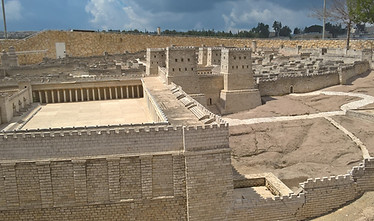
The stories on this site can help people understand the unique strong ties between the Jewish people and the incredibly amount of ancient sites and places in Israel. For example in every century since 3200 BC this site shows inscriptions and written texts that are related to Jewish communities in Israel of that period. Also nearly all synagogues (230+) that were build before 1947 are displayed and most ancient churches and mosques. In chapters 1-9, the major historical developments of each period are described.
Special thanks go to Wikimedia Commons, Wikipedia and their contributors, but also to many other sources. And to all the scientist, writers, and archaeologists who created so much fascinating information about the past! Links and references can be found in the accompanying texts. A long alphabetical list of all sites, artifacts ,and buildings (and again references for these amazing photos) can be found in Index & Photos.

Tifferet Yisrael Synagogue destroyed by the Jordanian Army in 1948, Jerusalem. It is currently being restored)
VIOLENCE & REVIVAL
The history of Israel clearly shows the immense amount of violence and destruction that took place. It shows the many times of brutal killings, slavery and expulsions of Jewish people & the prosecution, slavery and massmurders of Samaritans, Christians, Muslims and others. Despite these enormous horrors, history did not end and also shows the rebuilding and reconstruction of important sites and revival of communities. A proces of continuity and discontinuity for more than 3000 years. Revival was partly because of migration. There was a continuous religious wish as old 'as the Torah' to return to 'Eretz Israel' (either translated into 'Land of Israel' or 'the Jewish People'). Most Jewish immigrants before 1947 (and even before the 1960's) were refugees fleeing severe violence and persecution in Europe, North Africa or Asia. Further back in time, Jewish refugees from Spain arrived after the Inquisition of 1492 and from Russia, Ukraine, Eastern Europe and Persia in the 19th Century, all as a result of severe prosecution. In the 20th century more refugees fled from Europe and West Asia (Persian and Ottoman area's) because of growing antisemitism, violence and prosecution. The influx of all these refugees together with reforms by the Ottoman Empire (in the mid 19th century) created an economic revival. This also created a strong Arab migration. So after centuries of being an empty and poor land the country and it's population grew strongly and became the foundation of the later Start-up nation.
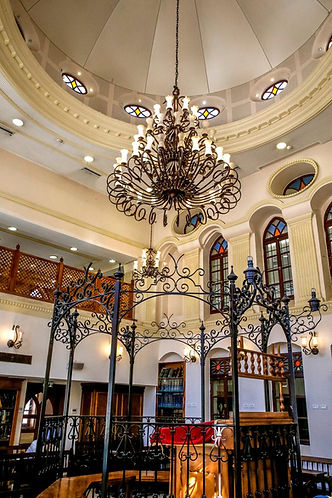.jpg)
Ohel Yitzhak Synagogue (1860) Jerusalem

"The violence between different religions (& also Christianity and Judaism) are the sad and harsh truth of history. History that should be remembered, not by blaming one group, religion or by forgetting the different contexts but working hard towards peace. The same peace as mentioned in Genesis 33 when Jacob and Esau started with reconciliation, acceptance and friendship."
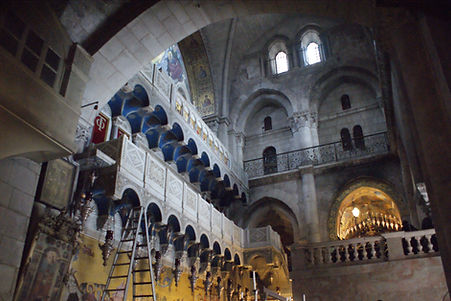
Ancient Church of the Holy Sepulchre
The Bible/Tanakh is a holy book and a guidance of faith for billions of people. The Bible is perhaps the most influential book before the enlightenment and crucial for the later development of modern human rights. These Hebrew Scriptures are also an incredibly important historical source. Still its purpose was religious and never to be a historical guidebook. This site aims at the archaeological facts that are crystal clear and part of the scientific archaeological and historical world. Sometimes they perfectly align with what the Bible describes and sometimes these different wavelengths travel in other directions. For historians and archaeologists, it is perhaps wise to follow the advice of Alan R. Millard who states that both textual and archaeological evidence must be interpreted carefully since neither of them provides a complete picture of ancient and cultural realities.
ARCHAEOLOGY OR BIBLE/TANACH?
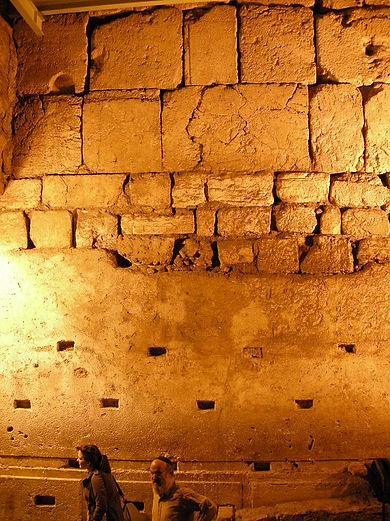
COMMONALITY & DIVERGING PATHS
The start of Christian and Jewish history goes back thousands of years. Both religions Judaism and Christianity start to diverge not with the birth or teachings of Jesus. Only later due to Paul the Apostle/Saul of Tarsus who was originally a Pharisee, Christianity started to deviate into a religion obeying the same God, but without the Jewish laws being obligatory for non-Jewish people. This move was aimed to make Christianity a religion more accessible for people in other parts of the world. This change however did not happen in Israel although it influenced the history of Christianity significantly. Jesus himself was a Jew who lived and acted according to the contemporary Jewish law. He shared his faith and teachings in Israel making Israel a holy land for Christianity. Still today the mutual shared Hebrew Scriptures are a strong common ground despite the very different paths of both Judaism and Christianity that created often strongly differing views. It created two unique religions, with also different branches and sometimes very different interpretations of the Tanach or Old Testament.

Talmud: “a little light chases away a lot of darkness”.
Western Wall Tunnel - Temple mount Jerusalem
This site wants to let both religions (just like the different traditions within each religion) shine but also in relation to the indispensable and fascinating Islamic sites! The information is written to explain the ancient, Jewish roots and ties to the holy land without any competition (and this site is clearly opposing any movements aimed at conversions!!). Trying to let both Christianity and Judaism shine and thereby contributing to friendship can be important when antisemitism is rising in the world! Certainly history (within or outside Israel) shows the immense losses of life and trauma's that can be a direct result of antisemitism!
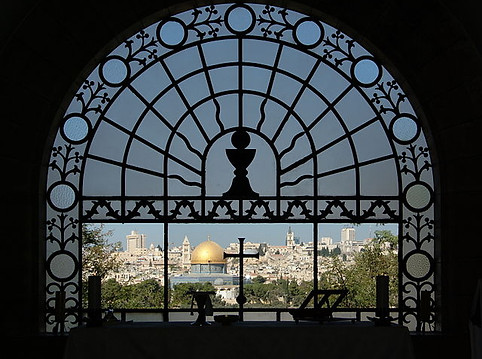
HISTORY & THE WINDOW YOU SELECT
History is always described through the window of today. All historians make choices and selections and people can regard certain choices as 'political'. However, these opinions, can often symbolise the current political tensions (even in academic circles) as much as it could tell something about the writer's perspective. Describing the history of Hindu India or the Islamic history of Albania is a lot more politically easier than to focus on the Jewish and Christian history of Israel. Another example is using the name Israel instead of Palestine. A simple fact is that at this moment the only truly functioning state (even in Samaria and Judea also called the 'West Bank') is the country that has the name Israel. (See criteria in what makes a country a country'). From that point of view Gaza could be seen today as a separate country and as a consequence, is not included. From a historic point of view there are also good reasons to use the name of Israel instead of others. The name Palestine, derived from the name 'Peleset' when it first appeared in the Egyptian hieroglyphs, was used to describe mainly the coastal region and the area were the Philistines lived before they disappeared in history. Later the name was used for a region, often part of the larger region of Syria, that was often much larger area than Israel (included parts of Jordan, Lebanon, Syria and Egypt: see map). However the name was not used to describe the Ottoman districts. John Murray writes in 1858 in his Handbook of Syria and Palestine that: "the Political Geography of Syria and Palestine changed with every dynasty or race which in succession conquered or possessed the country". Gudrun Krämer in his praised book 'A History of Palestine'(2011) writes that he uses the geographical boundaries of the British Mandate, that only existed for 30 years, to describe the history of Palestine. Not surprisingly it is realistic to describe the history of Israel using the current and older boundaries of modern Israel (including Judea and Samaria). Some of the borders of Israel remain disputed but this is not unique to Israel. (See list of countries with disputed boundaries).

5th century Beit Alpha synagogue

Israel, the religious and indigenous homeland and refuge for Jews ever since the Babylonian Empire, also became the most important pilgrimage destination for Christians. For thousands of years and before the establishment of modern Israel, this cradle of two world religions, became both a battlefield of religious intolerance and an area with a unique history that survived due to many periods of great cultural, artistic, and religious revival.
This website is focused on adding depth and beautiful pictures to the history of Israel and to the main developments within Judaism and Christianity in Israel. As mentioned this site also discusses the history of Islam (for example: Mosques & Shrines), Druze and Bahai although less extensively (perhaps more information on these religions will be added in time). Further the website is trying to give a better picture on the role of women in this long history.


Speaking about the Scriptures in relation to History: The exile and return of the Jewish people really happened and both actually confirm the validity of the Hebrew Bible! And whatever changed after the arrival of Yeshua/Jesus, he lived according to the Jewish law. His prophecy of the second Temple destruction and the following second exile of the Jews again confirmed the strength of the Bible and again in relation to the Jewish People. Despite different viewpoints on Yeshua, the covenant in the Torah with the Jewish people, is forever. Later new 'covenants' can be additional but never replace older promises by God. So, from a theologian point of view, both Jews and the followers of Yeshua can be 'Gods chosen people'. And besides this 'it is not up to us to decide the fate of others' and there should never be competition or hate between people of different faiths. Certainly the Abrahamic faiths could and should more actively honour their common grounds and peaceful coexistence!

PEACE & HISTORY
The Middle East or perhaps the larger area of the ancient 'fertile crescent' that was home to many of the earliest civilisations, is one of the most violent regions in the world. Perhaps the many changes of empires and rulers, combined with a lack of a strong central government in the area of Israel and Middle East, are reasons for the continuation of violence. This history of destruction is still visible in the history of ancient cities, churches, synagogues and mosques and in the next eight chapters that describe the major events within each period.
This site is just about history and everyone can have there own opinion regarding how to use history. Should history be important? For how long should history be relevant in politics or making decisions (one, three, ten or 100 generations)? Or is all history irrelevant? Certainly we should learn from it in creating a better more peaceful world! Today, politics and battles of all sorts are still going on and probably these will not end. But all conflicts need to stop before escalating into violence. Israel, like any state should use history and religion to share and preserve all that is so precious no matter what political directions are chosen. Also media and foreign countries should not support hate and antisemitism. Denying Israels right to exist and Jewish self determination is damaging to all Jews and to preserving Jewish indigenous culture in the land of Israel. Preserving democracy, ensuring safety, strengthening the role of women and creating equal rights in politics are keys to preserve peace in this complicated country. Both Judaism and Christianity, all faiths and of course all people can and should contribute to these goals!
_-_The_Dead_Sea_Scrolls%20ohayon%20avi.jpg)
Aleppo Codex - 10th century CE Tiberias - photo OHAYON AVI

.jpeg)
















%20Godot13.jpg)

_heic.png)









